One Big Adventure: Climbing Wyoming's Grand Teton

[Photo by Andrew Bydlon]
Before the summit glory or the grinding approach, before the alpine start, the tired legs, the cold hands, the falling rock, big summit bids start as an idea, hard and simple as a pebble. There is a mountain. There is me. Let’s see what happens when we put them together.
Somewhere along the way, standing atop a mountain became the full expression of human ambition. There’s glory to be mined from thin air, character to be forged on scree fields, and that rare metallic taste of fear and accomplishment when there isn’t another step between you and the sky. In short, it’s hero work.
This experience all comes together climbing Wyoming’s Grand Teton like nowhere else.
Climbing to the Grand Teton Summit
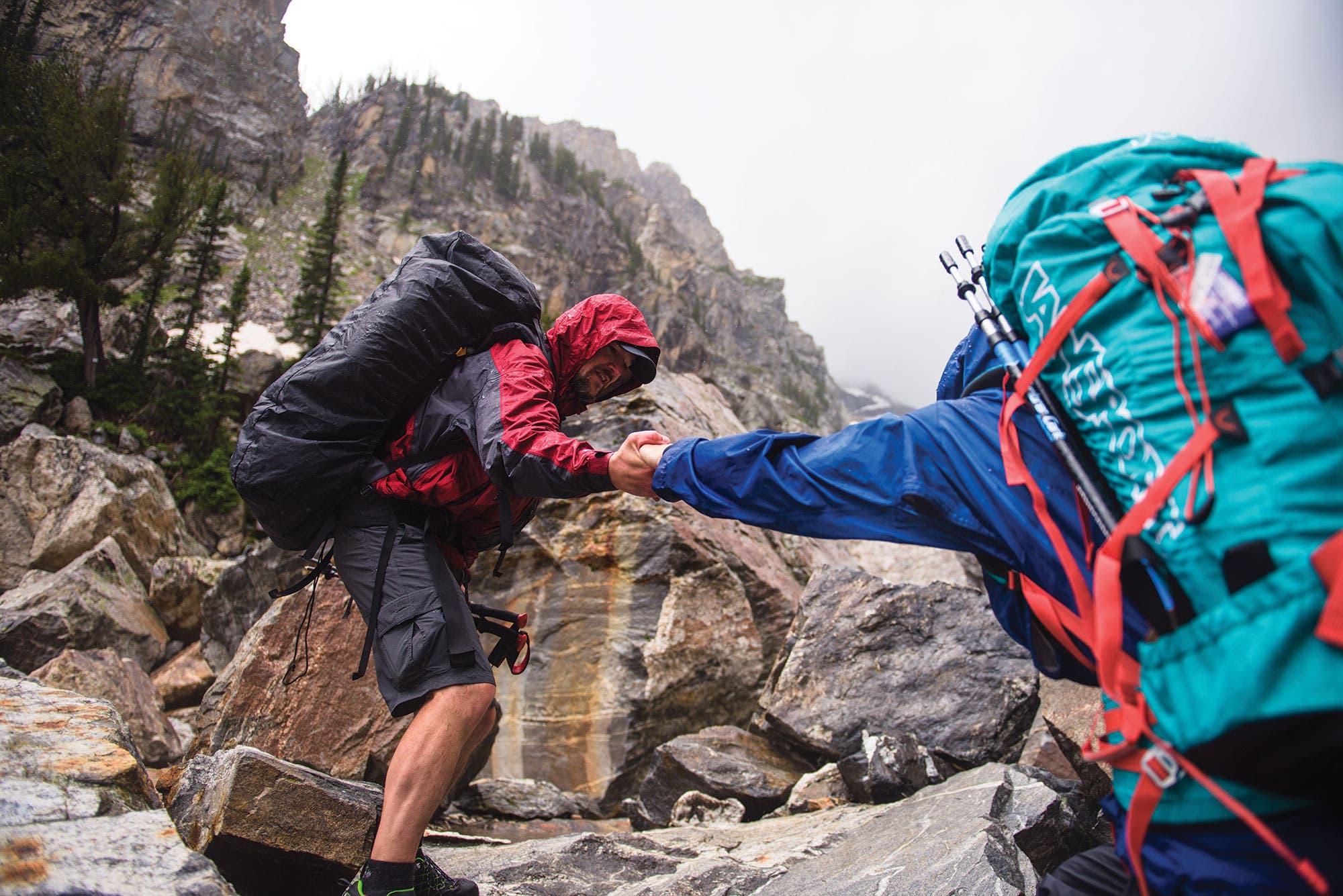
The 13,770-foot peak is arguable the country’s most aesthetic, attracting hikers who want something big, something that will stretch their comfort zone, and something that will introduce them to the world of vertical rock in a way that feels equal parts epic and accessible.
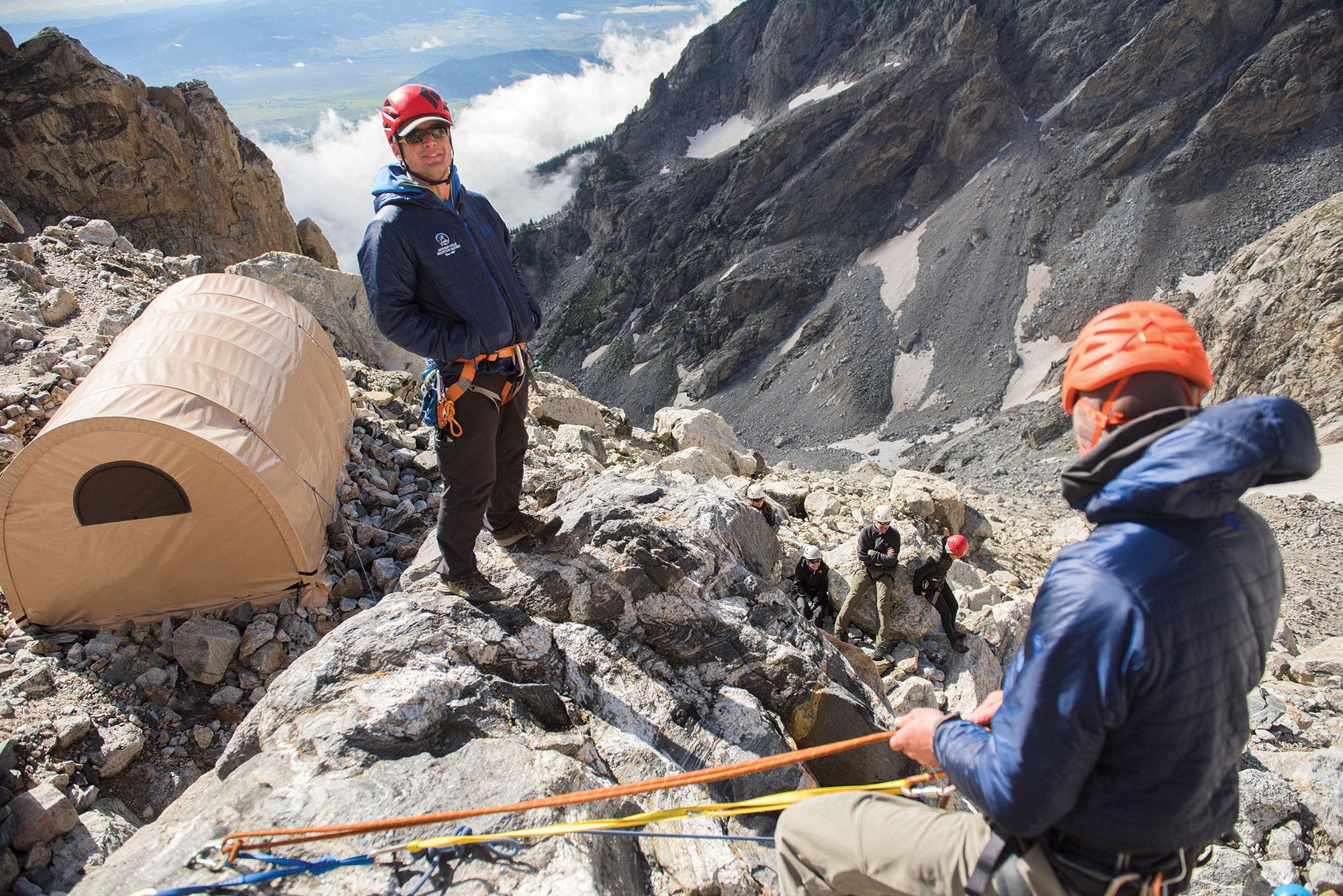
Climbing the Grand starts with a hike befitting the crown of the range. Pine forests give way to open meadows where wildflowers fold into the greenery as you switchback above the Snake River, the valley floor fading into summer haze. Boulders the size of tiny houses spill across the way around mile 5. And then you break free of treeline and enter a world where talus and scree reign. As the youngest subrange in the Rockies, the Tetons are all hard angles. And none is more impressive or charismatic than the Grand. From high camp at 11,200 feet, you can feel the summit, even as its own walls keep it hidden from sight.
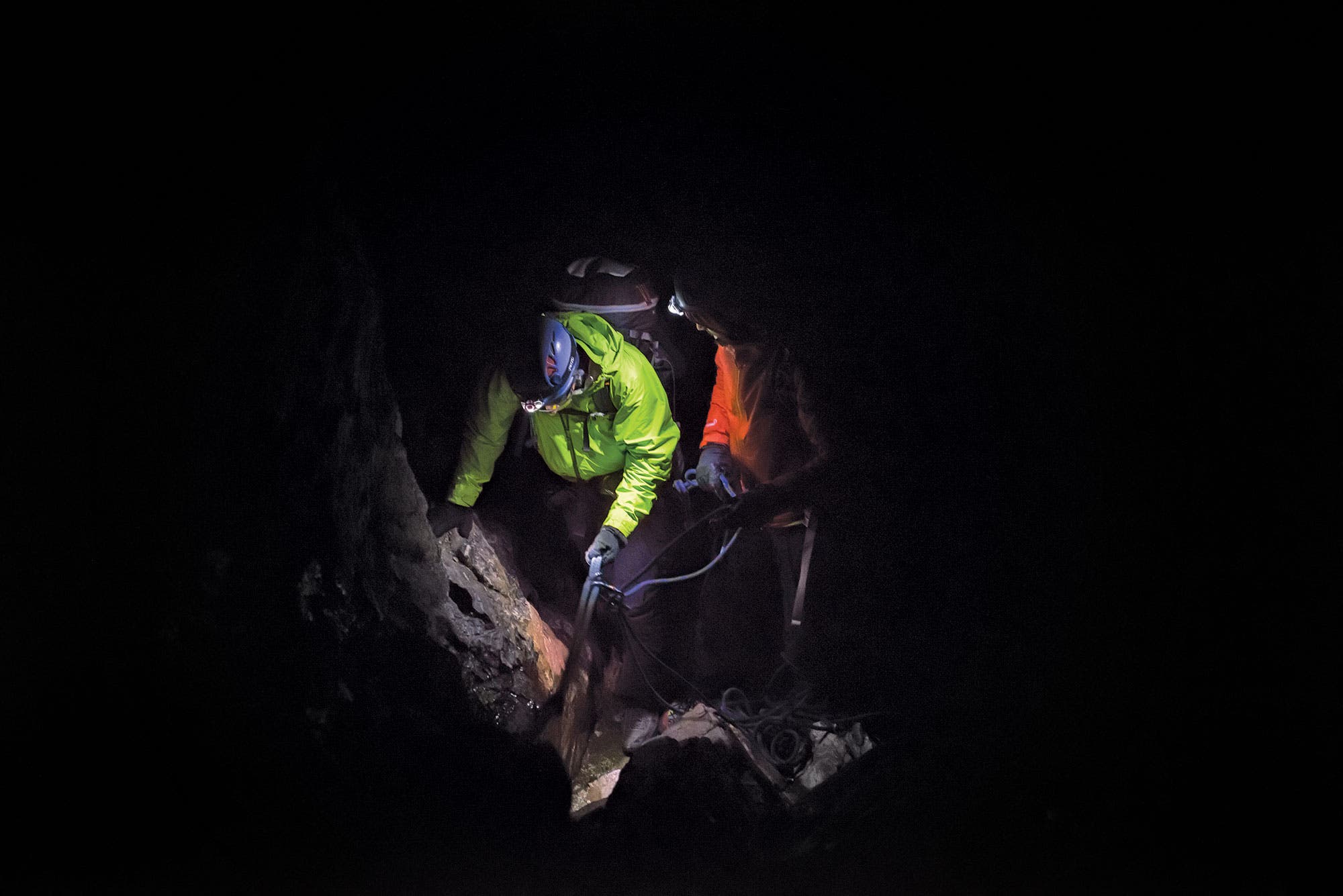
Big-mountain pushes start in the dark, a sort of supplicants’ procession where the psych and solemnity of the undertaking focus into the beam of a headlamp. You march up, head down, breathing hard in the thin air. The terrain gets truly steep just as the darkest reds and ochres seep back into the Wyoming sky.
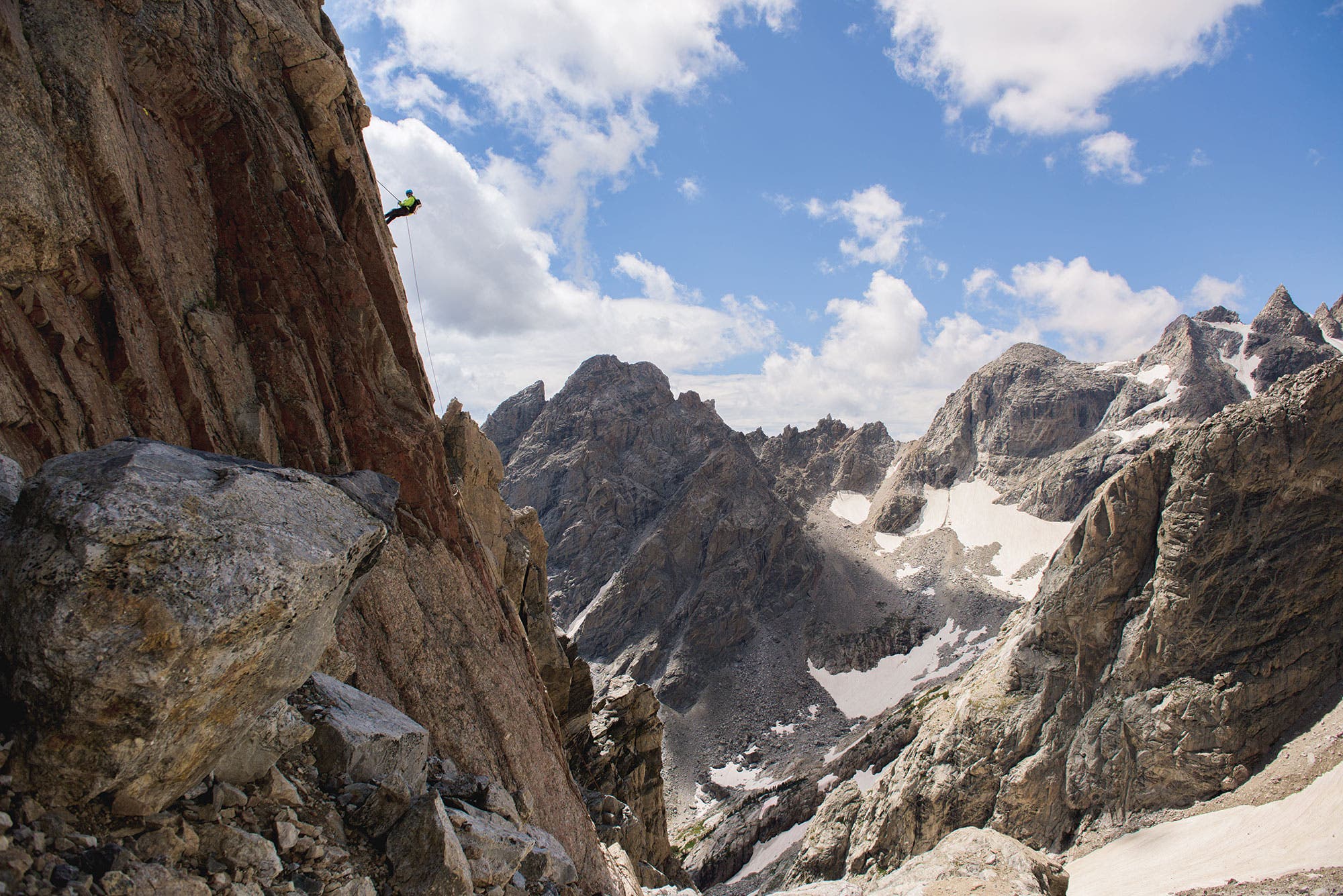
The lower saddle, slung high between the Grand and Middle Tetons, demarcates hiking from climbing. Above it, the Pownall-Gilkey Route maxes out at 5.8—no gimme, but doable for beginners with a guide. The upper saddle, a comma in an otherwise breathless sentence, follows soon after. And then comes the office building summit block, with its commanding view of a rock garden of smaller peaks rising from an ocean of prairie.
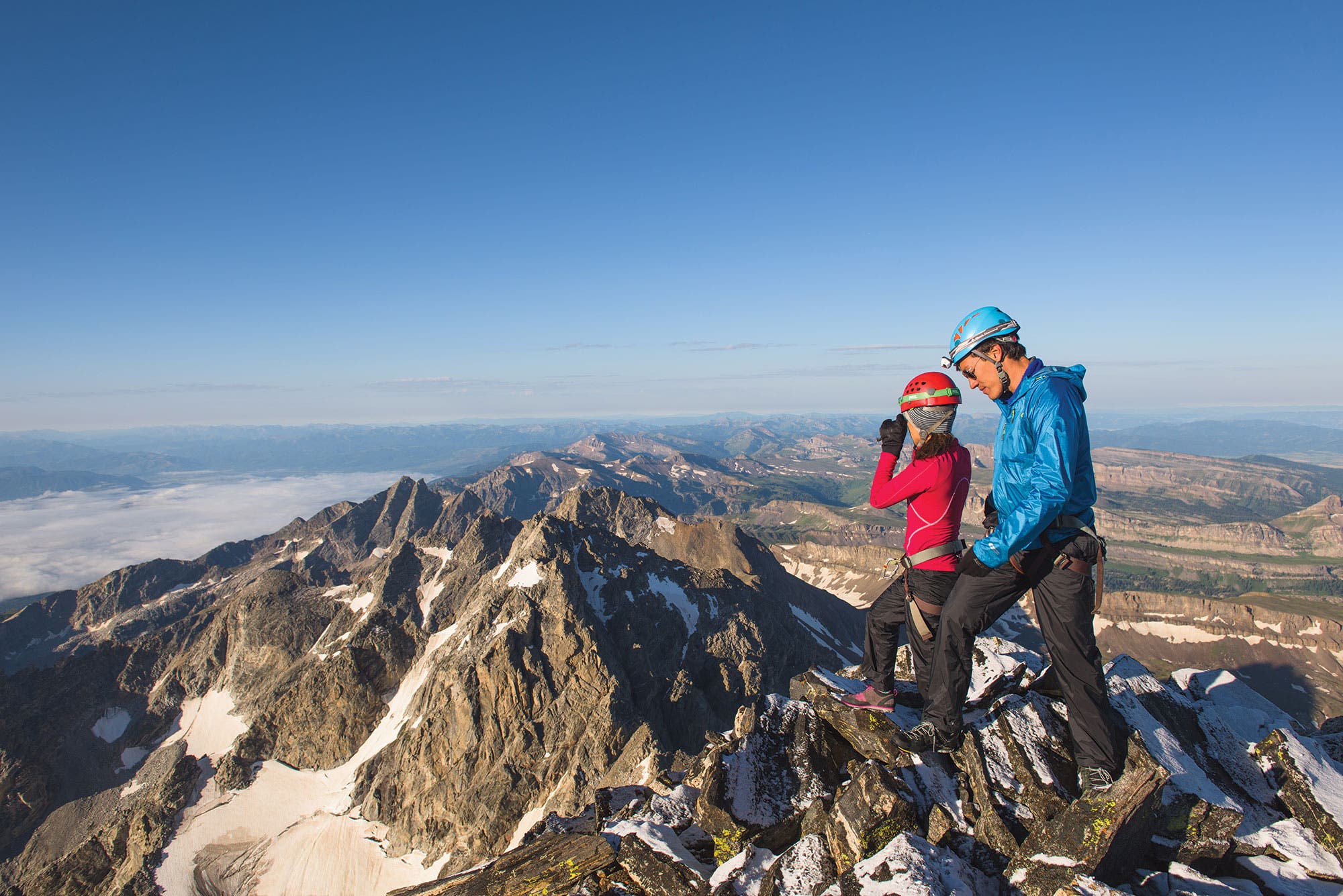
Of course, not all attempts end on top. If graupel pings off your helmet like BBs and the storm clouds hang at your knees, the summit will have to wait. But knowing when to turn around is part of the hero’s journey, as well. And you already knew that the Grand is a place where people visit but cannot stay. Rather, it’s the mountain that stays in you.
Logistics for Climbing Grand Teton
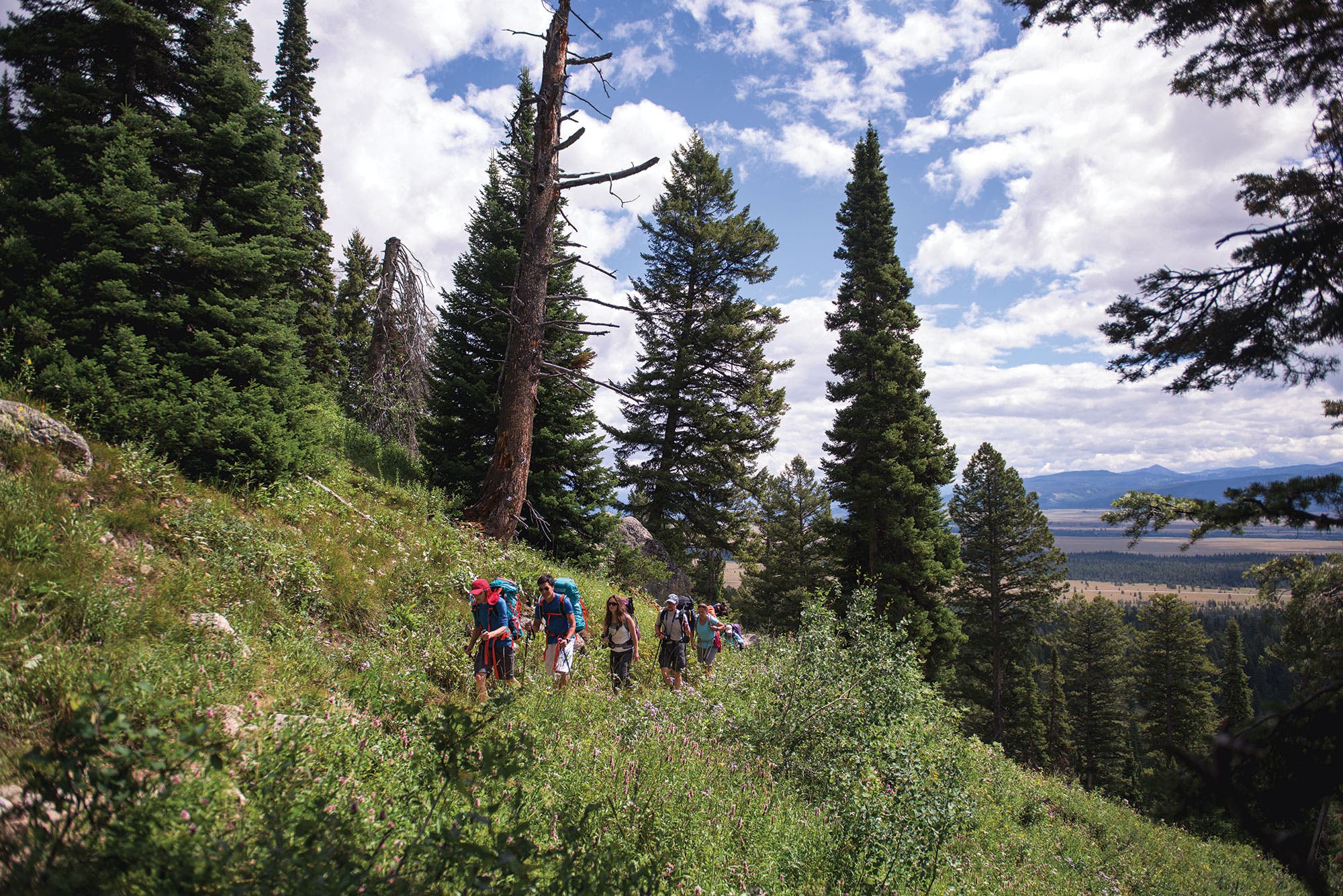
Trailhead: Lupine Meadows
Season: July to September
Guide: Jackson Hole Mountain Guides (climbs start at $1,180/person)
More information: Visit Grand Teton National Park
How to Beat Altitude Sickness
Keep the ups from taking you down.
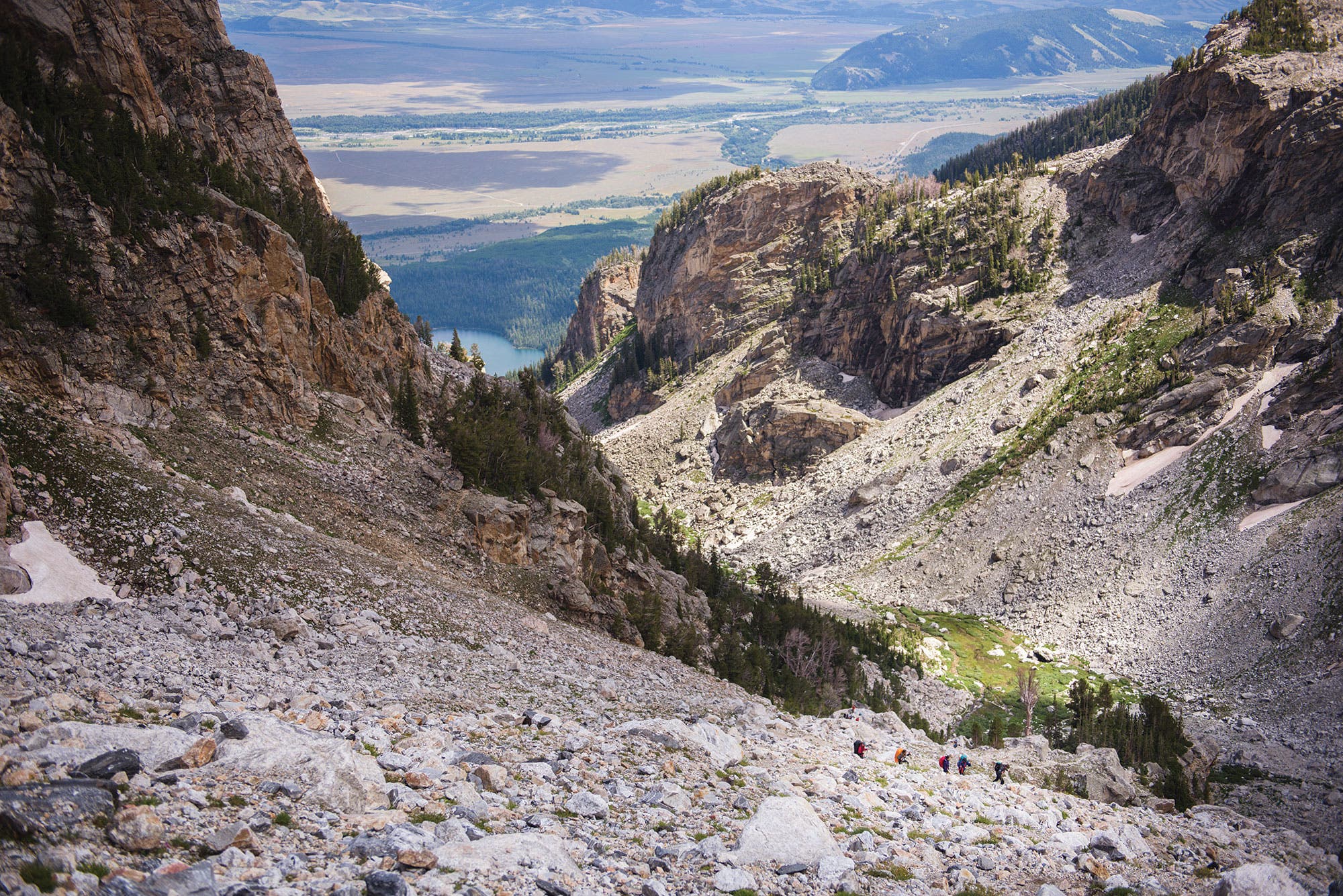
Get acclimated. Most people take at least three days to start adapting to lower oxygen levels. If you live below 5,000 feet, arrive at your destination early to adapt. Live at sea level? Focus on hill workouts—fitness helps.
Hike high, sleep low. Adjust your route to camp in saddles rather than at the day’s high point. Higher oxygen levels during rest boost recovery.
Stay hydrated. Drink about a liter per day more than usual—dehydration can exacerbate symptoms of altitude sickness.
Eat more carbs. Digesting carbs requires less oxygen than proteins or fats, keeping you powered up.